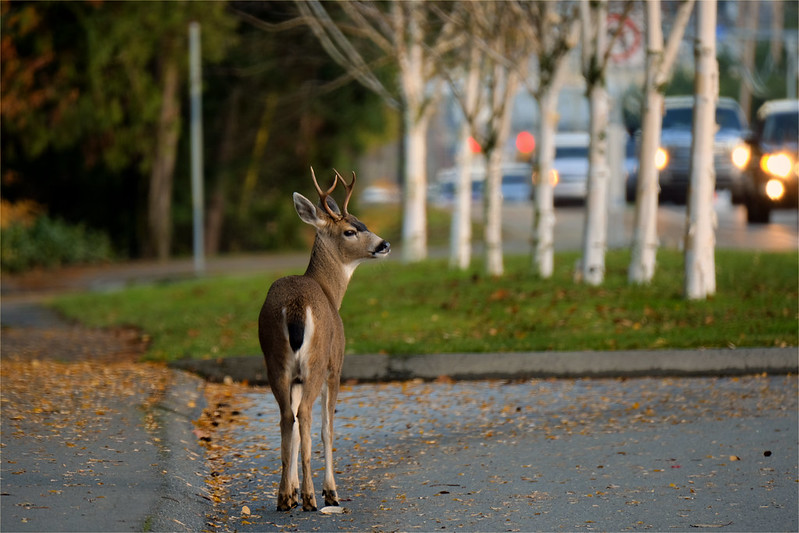How to avoid animal-vehicle collisions (and what to do if you can’t)
November 15, 2020
About 2 million times every year, animals and cars collide on U.S. roadways — often causing serious and even fatal injuries to drivers and passengers, along with about $1 billion in damage. And these collisions spike in the fall and winter, thanks to migration and mating patterns as well as reduced visibility caused by shorter days and weather conditions.
But as random as these collisions might seem, there are things you can do to improve your chances of avoiding one. Here are some tips to keep in mind when you’re behind the wheel — as well as some guidelines to follow if you ever do hit an animal.
Avoiding wildlife
- Be especially careful at dusk and dawn: Not only are these active times for large animals to be out and about, but visibility is decreased as well. From 5 p.m. to midnight and 5-8 a.m. are particularly dangerous times. And remember, animal vision is very different from ours: While deer see well in low-light situations, headlights can completely blind them.
- Watch for signs, too: Areas with a lot of wildlife, or where frequent incidents have occurred, often will have posted warning signs. Don’t disregard them. Watch your speed and be hyper-alert.
- Expect more than one: Did you just see a deer? Don’t relax quite yet, even though you didn’t hit it — there likely are more in the area.
- Stay calm: If an animal is in the roadway, try not to swerve wildly — you could hit something else, such as another car, or end up in a more dangerous situation than you were before. Hit the brakes, hit the horn, and make safe maneuvers whenever possible.
After an accident
- Call 911 immediately: Of course, if there are any injuries to you or passengers, you’ll want to get aid there as quickly as possible. But even if everyone is OK, police can help deal with traffic issues and removing the animal.
- Do not touch the animal: Even a harmless-looking deer can cause significant injury, especially if it is frightened. And if you hit something even more dangerous, like a bear (it happens!), stay in the car. Often, they can withstand being hit by a vehicle.
- Document the damage: Once any injuries are treated, take photos of the accident scene and vehicle damage and write down details. Get information from witnesses and file a police report if necessary. This will help when it comes time to file an insurance claim.
- Talk to your insurance company: Animal-related claims are typically covered under comprehensive coverage. Your insurance agent or carrier can help you determine your options after an accident — but it’s a great idea to learn more about your coverage before you need to use it.
Remember, stay alert, avoid distractions and watch your speed. If you’re already a safe driver, you’re probably already doing these things — and if you’re not, well, there’s no better time to start! Your fellow drivers (and your local animals) thank you.
Reposted with permission from the original author, Safeco Insurance®.
Top image by Flickr user marneejill used under Creative Commons Attribution-Sharealike 2.0 license. Image cropped and modified from original.
